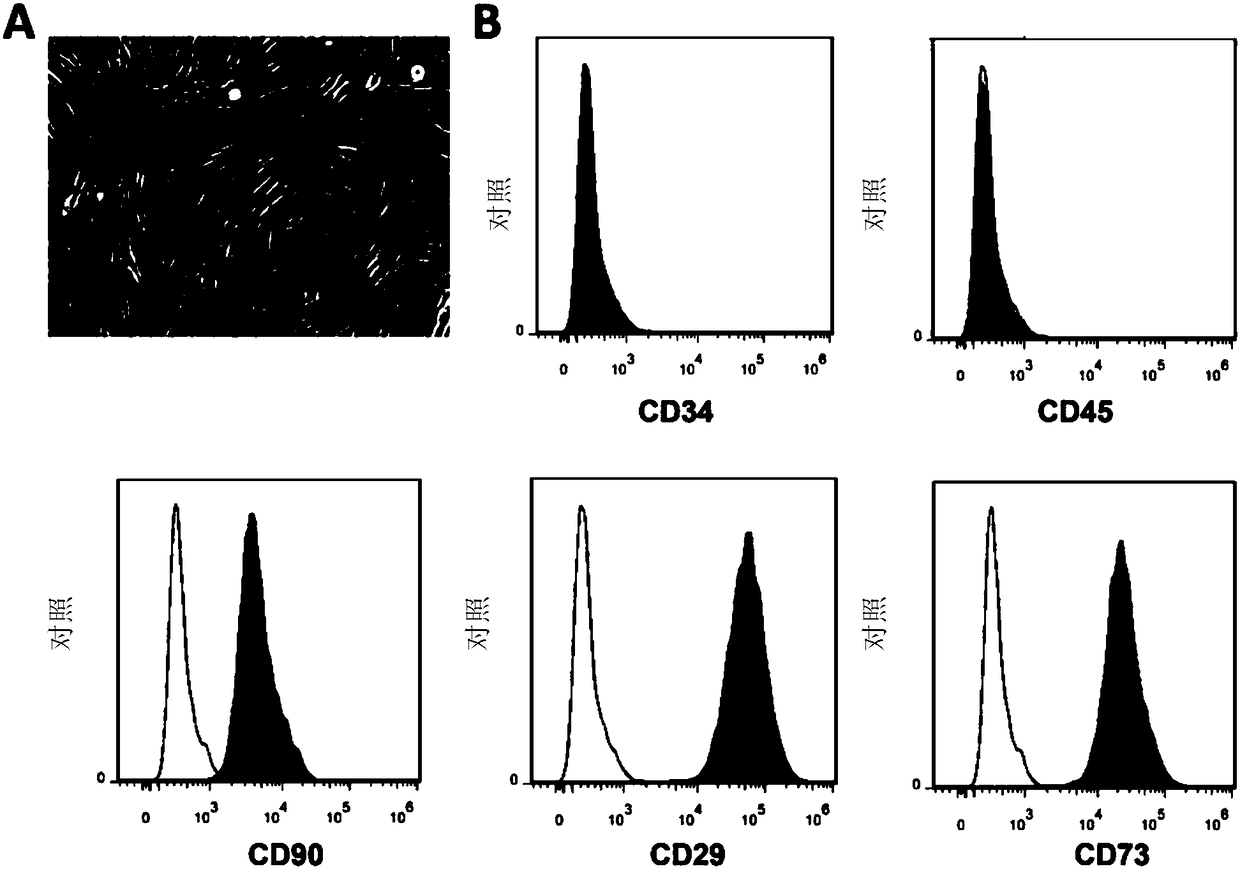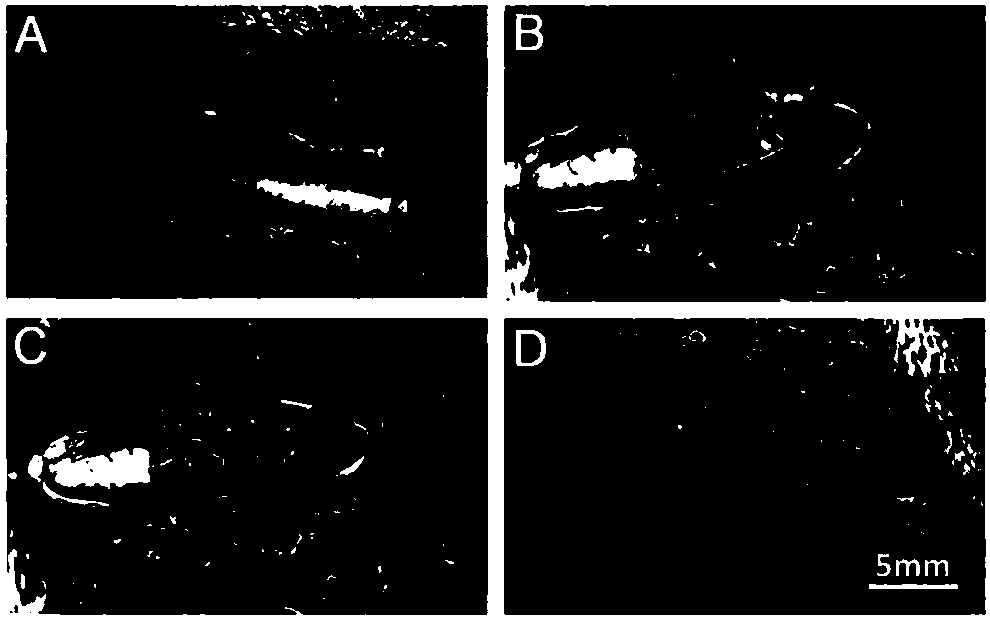Composite mesenchymal stem cell functional collagen scaffold and applications thereof
A collagen scaffold and stem cell technology, applied in medical science, tissue regeneration, prosthesis, etc., can solve problems such as nerve dysfunction that cannot be effectively solved
- Summary
- Abstract
- Description
- Claims
- Application Information
AI Technical Summary
Problems solved by technology
Method used
Image
Examples
Embodiment 1
[0101] Embodiment 1, the preparation of the functional collagen scaffold of composite mesenchymal stem cells
[0102] 1. Isolation and culture of placental mesenchymal stem cells
[0103] 1. Take the placenta of the full-term caesarean section fetus (according to the hospital's regulations and the consent of the family members), and separate the placental chorionic tissue.
[0104] 2. Wash the placental chorionic tissue obtained in step 1 with PBS buffer and cut it into small pieces, digest it with 0.1% (mass fraction) type II collagenase at 37° C. for 90 min, and then use 10% (volume percentage) fetal bovine serum The L-DMEM culture solution was pipetted repeatedly to stop the digestion, and the cell suspension was obtained by passing through a 200-mesh sieve, and the cell suspension was centrifuged at 160 g for 5 min, the supernatant was discarded, and the cell pellet was collected.
[0105] 3. Resuspend the cell pellet obtained in step 2 with L-DMEM medium (containing 10mL...
Embodiment 2
[0127] Example 2. Application of Collagen Scaffold Composite with Mesenchymal Stem Cells to Treat Canine Acute Spinal Cord Transection Injury
[0128] 1. Preparation of canine acute spinal cord transection injury model
[0129] Experimental animals: 1.5-year-old female Beagle dogs (body weight 8-10kg).
[0130] After the experimental animals were anesthetized, they were randomly divided into 6 groups, 6 animals in each group, and the following operations were performed:
[0131] Control group I: The T7-T9 lamina was opened to expose the spinal cord tissue, the spinal cord at the T8 segment was resected by 5 mm, no collagen scaffold was transplanted, and the dura mater was tightly sutured.
[0132] Control group II: Open the T7-T9 lamina to expose the spinal cord tissue, resect the spinal cord at the T8 segment 5 mm, transplant the 5 mm long and 5 mm total diameter collagen scaffold bundle prepared in Step 3 of Example 1, and tightly suture the dura mater.
[0133] Experiment...
Embodiment 3
[0161] Example 3. Application of Collagen Scaffold Composite with Mesenchymal Stem Cells to Treat Dogs with Old Spinal Cord Transection Injury
[0162] 1. Preparation of canine old total transection injury model of spinal cord
[0163] Experimental animals: 1.5-year-old female Beagle dogs (body weight 8-10kg).
[0164] 1. After anesthetizing the experimental animals, open the T7-T9 lamina to expose the spinal cord tissue, resect the spinal cord at the T8 segment by 5 mm, and suture the dura mater tightly.
[0165] 2. At the 9th week (after 2 months) after completing step 1, the experimental animals were anesthetized and randomly divided into 6 groups with 7 animals in each group, and the following operations were performed:
[0166] Control group I: The skin was cut along the original incision, and the epidural and subdural scar tissue was excised under a microscope until the normal spinal cord tissue at both ends was exposed. No collagen scaffold was transplanted, and the du...
PUM
 Login to View More
Login to View More Abstract
Description
Claims
Application Information
 Login to View More
Login to View More - R&D
- Intellectual Property
- Life Sciences
- Materials
- Tech Scout
- Unparalleled Data Quality
- Higher Quality Content
- 60% Fewer Hallucinations
Browse by: Latest US Patents, China's latest patents, Technical Efficacy Thesaurus, Application Domain, Technology Topic, Popular Technical Reports.
© 2025 PatSnap. All rights reserved.Legal|Privacy policy|Modern Slavery Act Transparency Statement|Sitemap|About US| Contact US: help@patsnap.com



